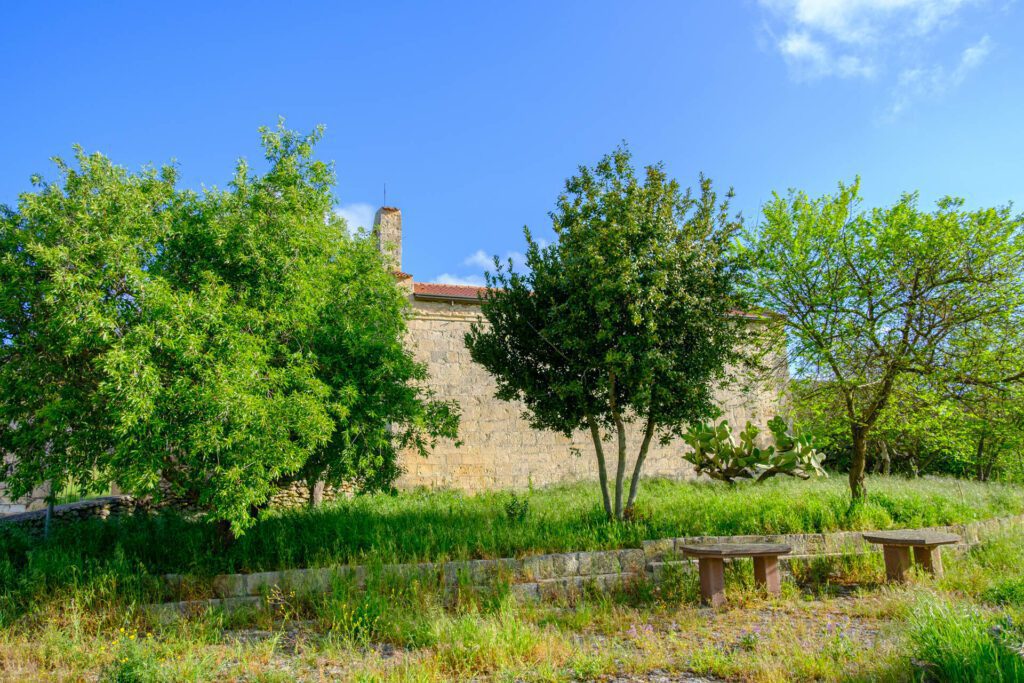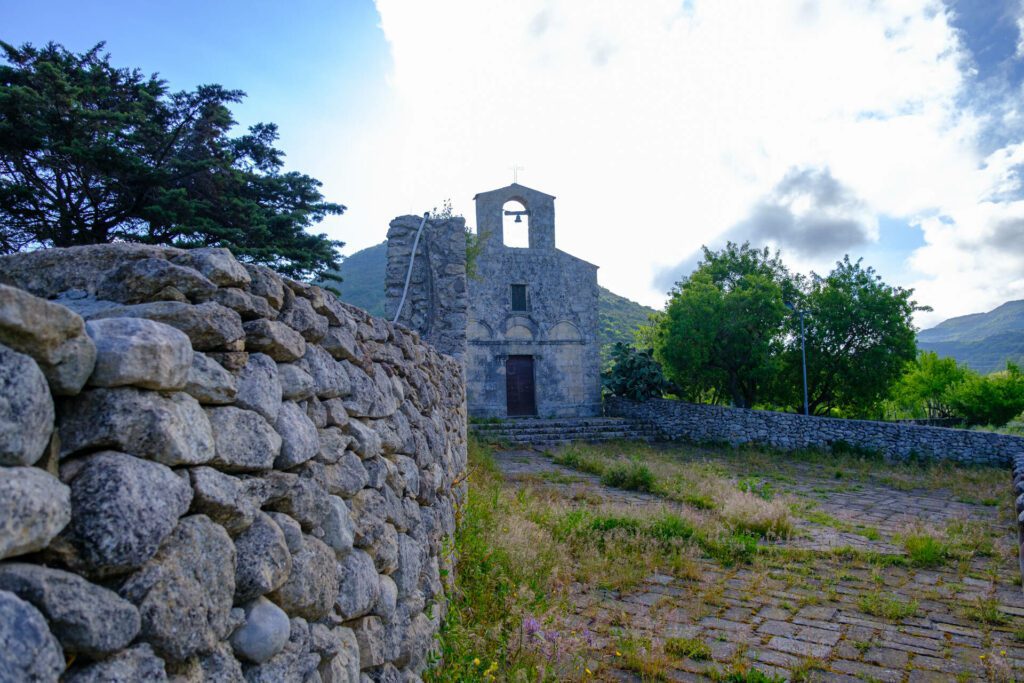Santa Maria di Cea
CHIESA DI Santa Maria di Cea
The church of Santa Maria di Cea stands majestically about 6 km from Banari, nestled in the heart of a fertile valley crossed by the Badu de Corte stream. This geographical position not only gives the site a special charm, but also testifies to the historical importance of the area, rich in natural resources that favoured human settlement and the development of religious centres.
The building, originally known as 'di Seve' after the name of the ancient centre where it stood, represents a valuable example of Sardinian Romanesque architecture. Its foundation, dating back to the second half of the 12th century, is set in a period of great cultural and religious ferment for the island, characterised by the spread of monastic orders and the construction of numerous sacred buildings.
The initial connection of the church with the Benedictine order of Vallombrosians, and the subsequent reconfirmation of this affiliation in the early 15th century, offer an interesting insight into the religious and cultural dynamics of medieval Sardinia. This affiliation probably not only influenced the architecture and decoration of the building, but also inserted it into a wider network of monasteries and churches, facilitating the exchange of religious ideas and practices.
Architecturally, Santa Maria di Cea is distinguished by its elegant simplicity.
The single-nave plan, typical of many Sardinian Romanesque churches, creates a unified interior space that favours the concentration of the faithful towards the altar. The façade, made of squared limestone ashlars, not only gives the building an appearance of solid beauty, but also testifies to the skill of the local stoneworkers.
A particularly interesting element are the floral pseudo-capitals decorating the façade. These ornamental details not only embellish the exterior appearance of the church, but also offer valuable information on artistic influences and sculptural techniques of the time, revealing possible connections with other artistic traditions of the Romanesque period.
The imposing bell gable with semicircular opening is a distinctive element of the building. In addition to its practical function of housing the bells, this structure adds verticality and dynamism to the church's profile, creating a visual focal point that stands out against the surrounding landscape.
Santa Maria di Cea is therefore an architectural complex of extraordinary historical and cultural value. Its presence in the valley not only enriches the artistic heritage of Banari, but also offers a unique window into the medieval history of Sardinia. Every element of the building, from the choice of materials to the layout of the spaces, from the sculptural decorations to the bell tower, recounts a part of the island's rich history, bearing witness to the 'cultural and religious energies of the past' and inviting visitors to a profound and engaging experience of discovery.
This monument not only preserves the memory of a bygone era, but continues to play an active role in the cultural and spiritual life of the local community, representing a tangible bridge between Sardinia's past and present.

 ►
Explore 3D Space
►
Explore 3D Space
























